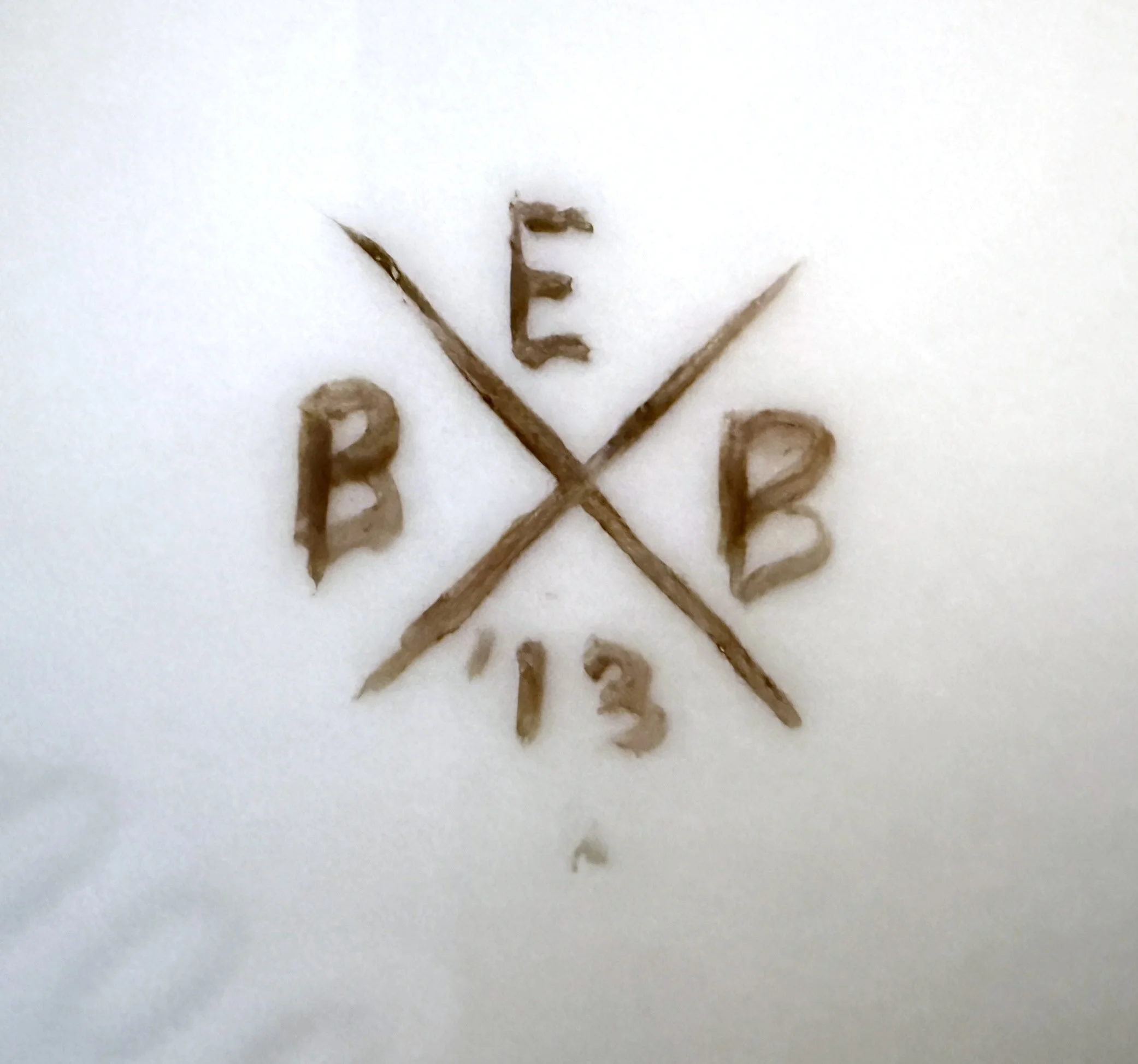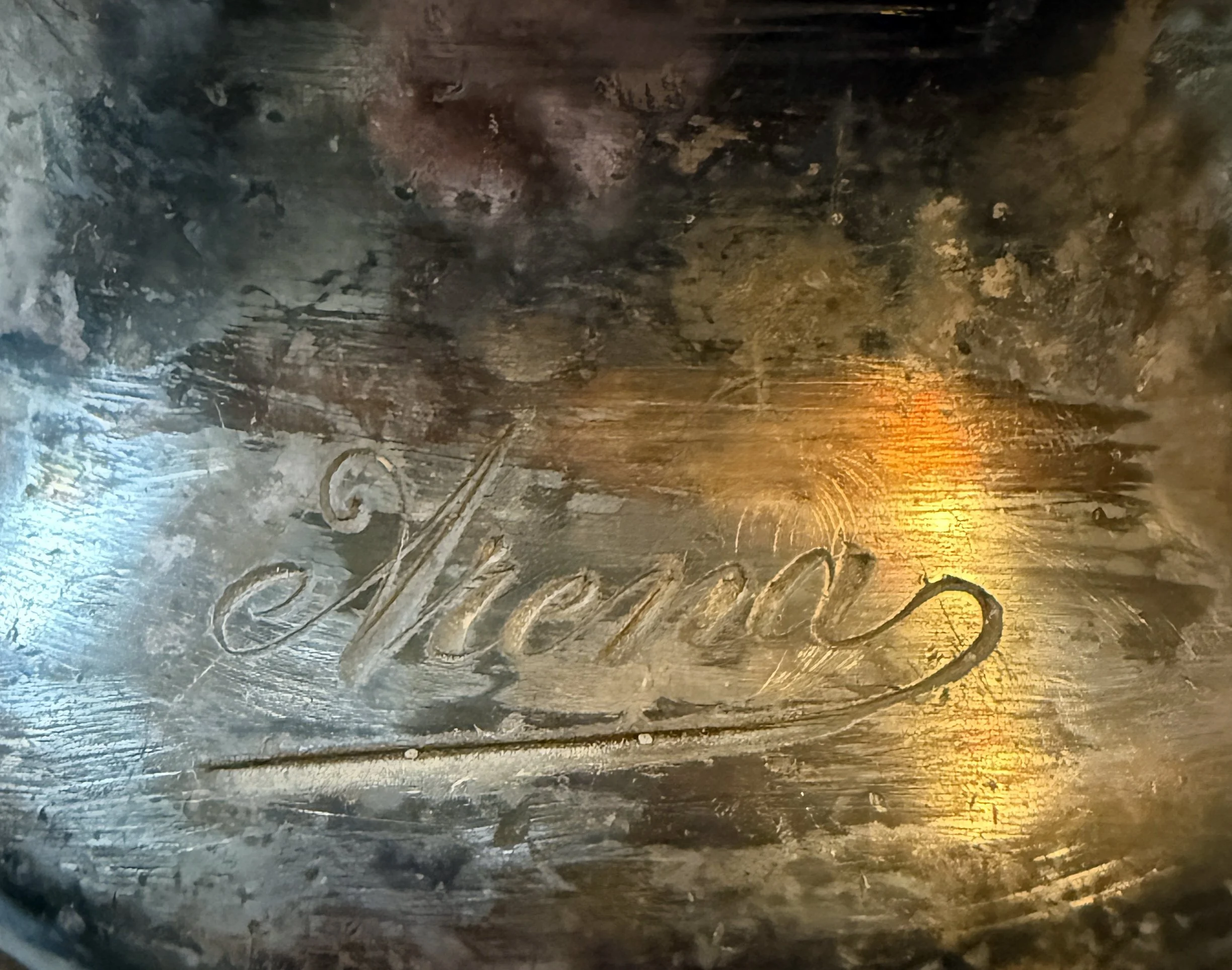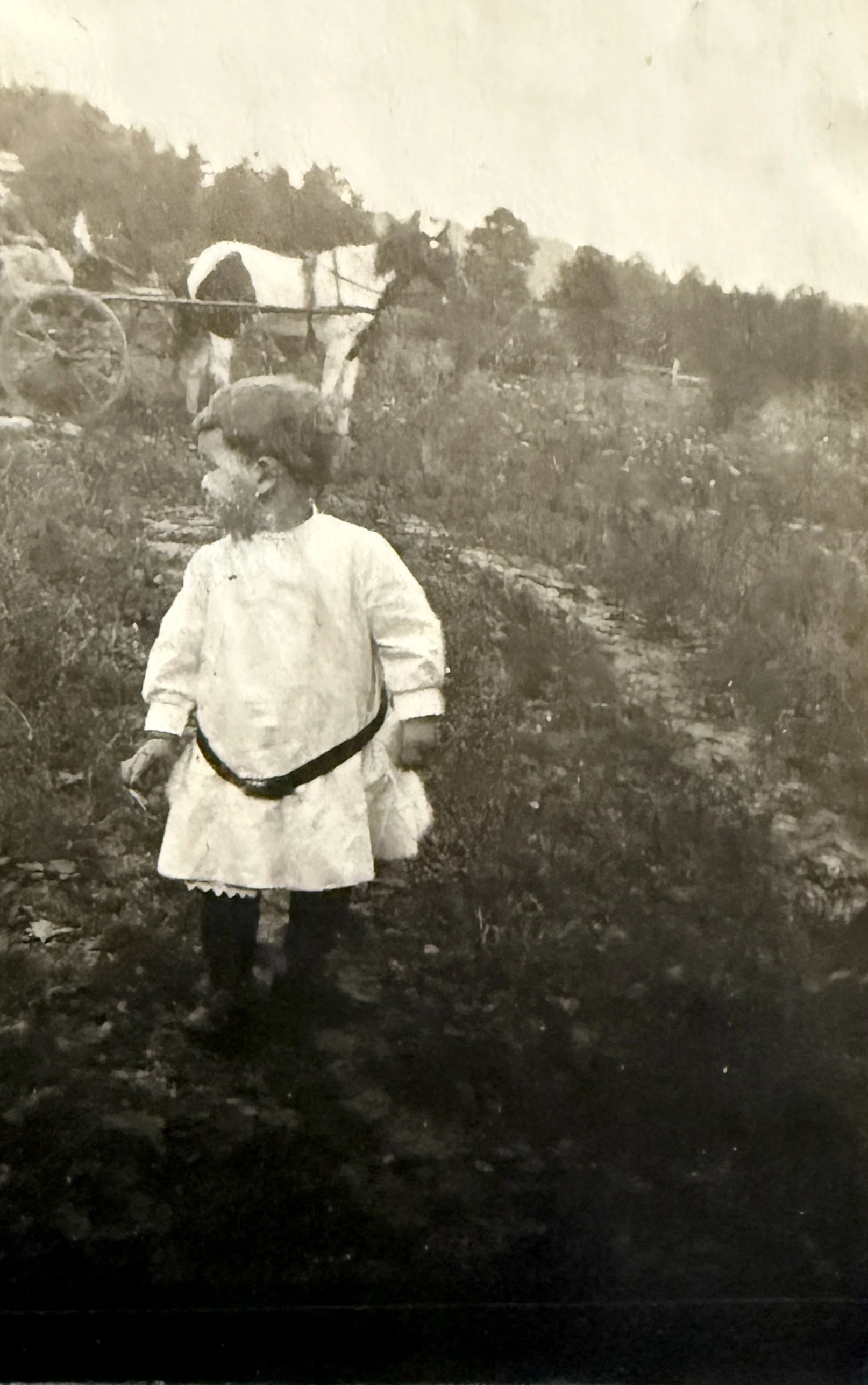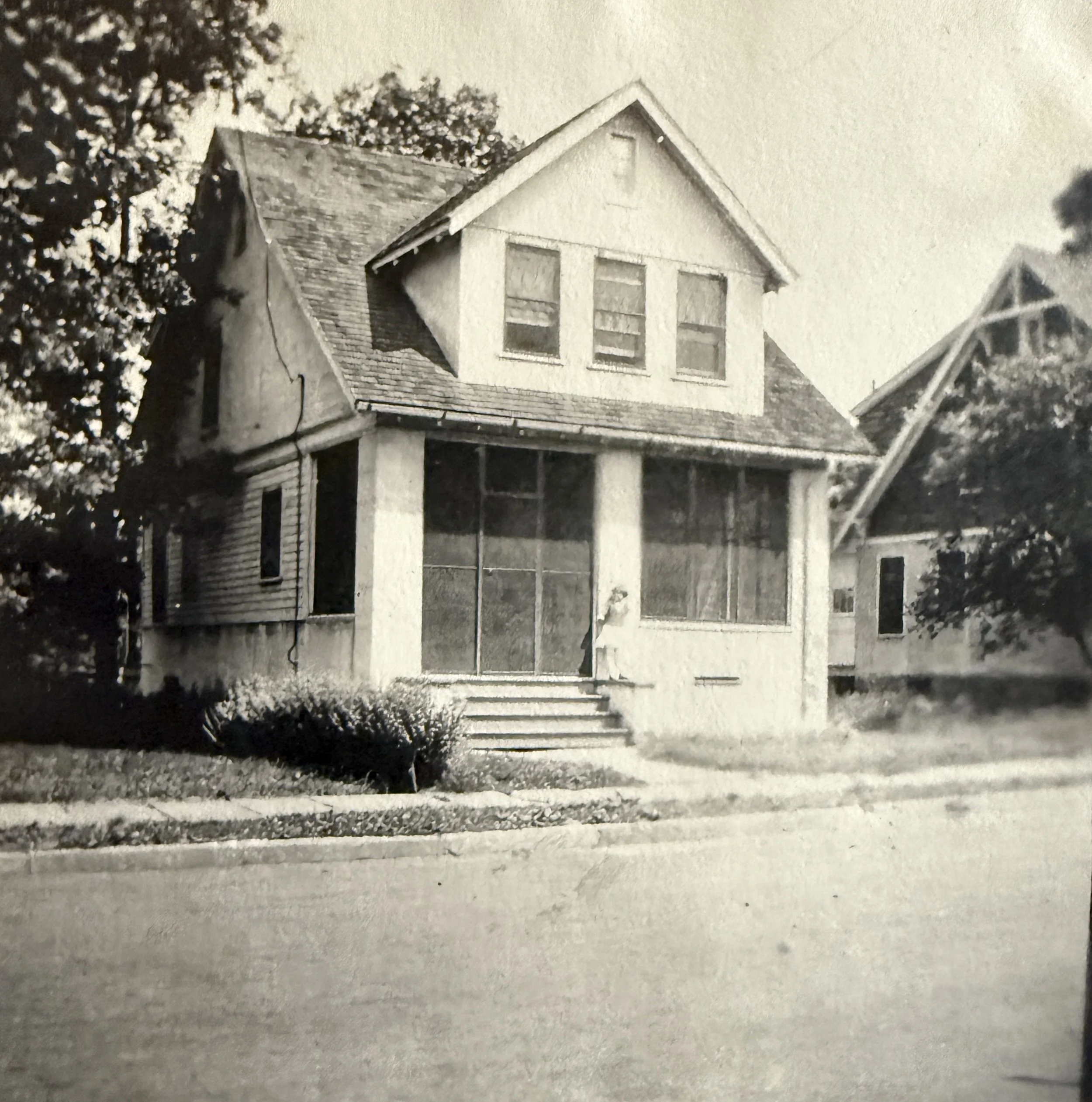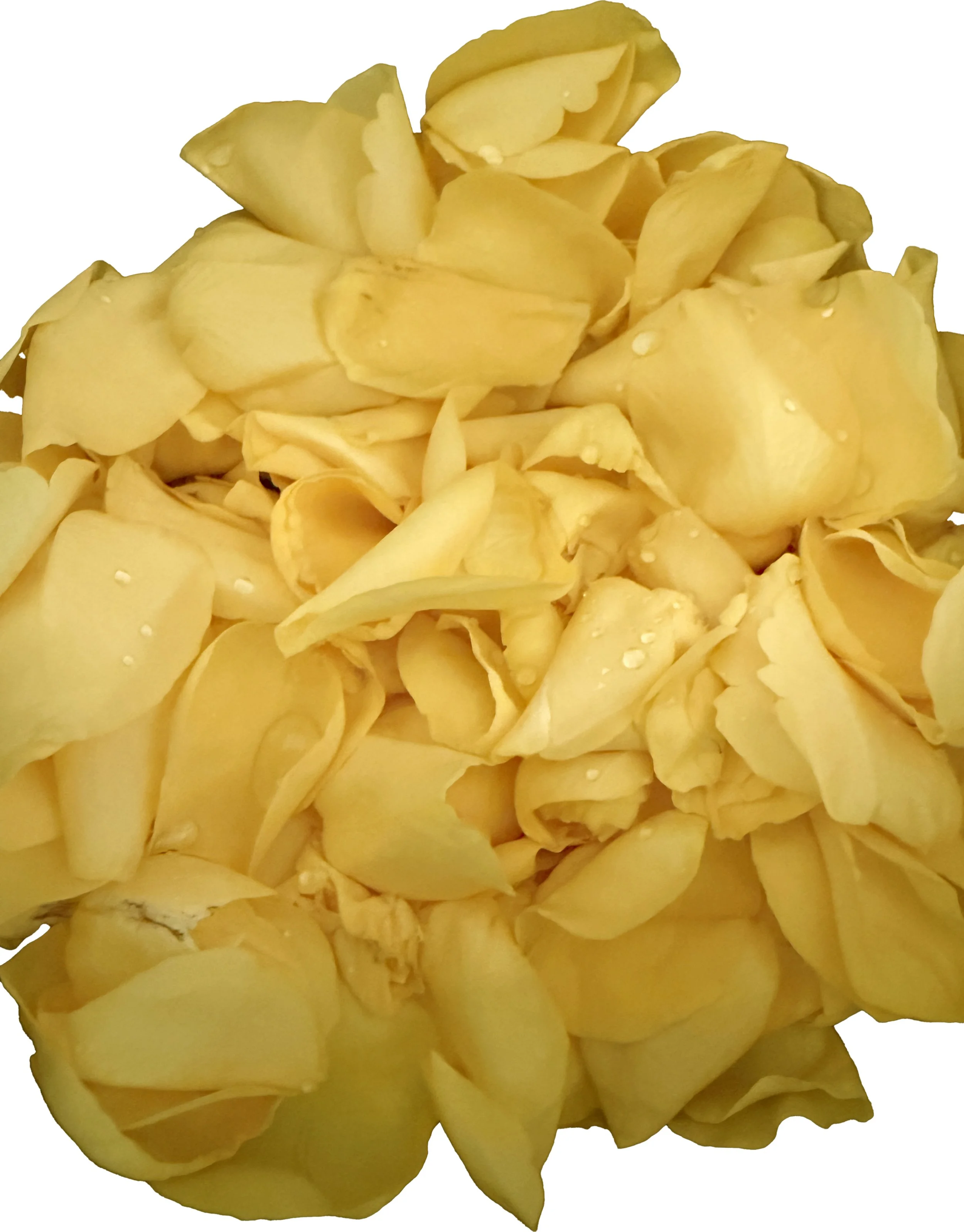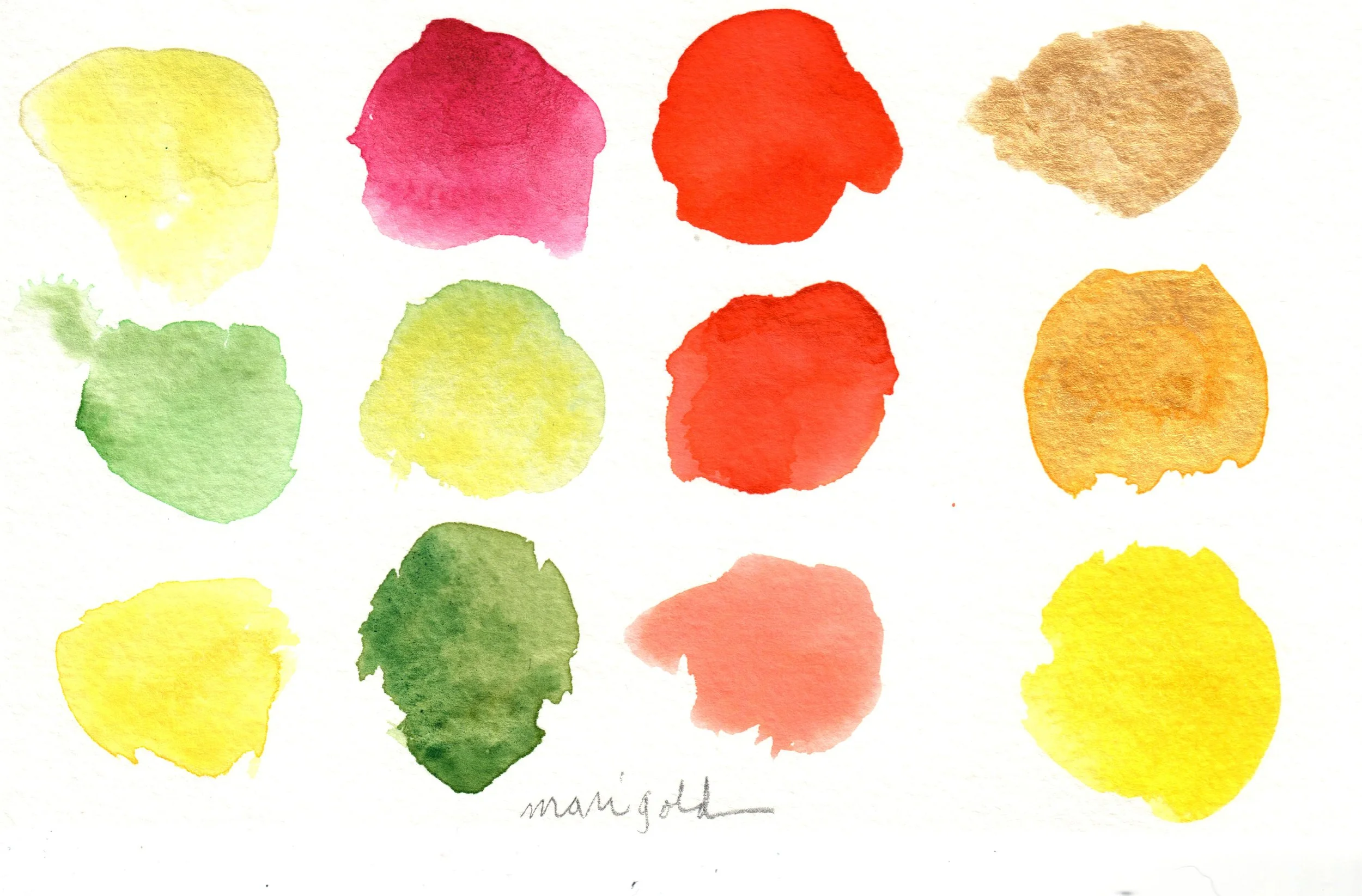Book of Trees: Myrtle and Rose
THE CROOKED BRANCH: EDITION #02: A Rose by Another Name.
A new mystery, The Language of Flowers, links to old books, how to make rosewater, and trusting your instincts.
“The Crooked Branch” series of Book of Trees traces a legacy of whispers and shadows.
THE MYSTERY:
My peculiar mother hid things in boxes, secreted under an 18th-century house in the woods, with a stream running through its basement. I opened a box with my grandpa, Elwood Lincoln Baxter, before he passed away at age 95. In it, we found three small porcelain creamer pitchers, a pair of candleholders, and a silver lidded urn.
The porcelain was hand-painted, dating to the 1930s (or so we thought). “This was my mother’s,” Elwood said, marveling to see it again. “My mother painted this.”
Elwood’s mother was named Myrtle. Born in 1884 into a family of 11, Myrtle was one of several sisters named after trees. In the Celtic tradition, trees have their own astrology. Like the stars, they are powerful beings that connect this world to the next, their qualities pulling at us and us through life’s currents.
Myrtle is a holy tree, revered across cultures - it is universally connected to love.
It is called Hadassah in the Torah; it bloomed to announce Aphrodite’s birth, it belongs to Venus, and was carried in every British monarch’s bridal bouquet, including Meghan Markle’s.
The most well-known dictionary of flower meanings is Kay Greenaway’s. In The Language of Flowers,
Greenaway introduces the concept of botanical cryptography—a key to flower codes used for secret communication. Greenaway’s work follows three earlier books that described this ancient, coded language for everyone. The meanings were thought to originate from Turkey, dating back to the fourth century C.E. So, just as the Ottoman Empire was ending in the late 19th century, their (likely, very misinterpreted - I see you , Lady Montague) flower language experienced a revival, helping bashful Victorians express themselves.
Myrtle’s definition is simple and consistent with ancient lore: Love.
My great-grandmother, Myrtle, was more complicated. She left home when Elwood was a baby during the Great Depression to go to the city and earn money to support the family. Her husband, Harry, who came from a Traveler background and lacked an education and proper identification, had stopped trying to find work. Myrtle was my (peculiar) mother’s favorite relative. Ma spoke of her “Grandma Mimi” with uncharacteristic longing.
As a child, I sensed something else when people talked about Myrtle. A gut feeling. Something icy—I’d pushed it away.
The paintings dancing around the small porcelain pitcher were delicate, colorful, and highly varied. I marveled at how her style and color palette changed significantly with each piece. I turned one over and found a signature.
It wasn’t from the 1930’s.
And, it wasn’t Myrtle’s.
I turned another pitcher and discovered it had been hand-painted in China. I heard a rustle within it. I removed the lid and found
A moth.
Its wings shed dust as they beat against the cups’ ring.
None of the pieces bore her signature.
Myrtle hadn’t left home to become a porcelain painter.
“Um, Grandpa?” I said…
I rubbed at the tarnish on the silver urn to find it was engraved with yet another name.
Who was Arena?
What was Myrtle up to?
I went into research mode.
Myrtle
“My mother was in her late forties when I was born,” my grandpa remembered. “I’d see her every now and then. My sisters never recovered from her leaving,” Elwood said.
Records of Elwood’s childhood are sparse. His mom left. He ran wild in the streets. Every now and then, a neighbor would pull him inside, give him a meal, and a bath. He met my grandma at age 15, lied and told the Navy he was 18, and fought in WWII. From there, his life spins wild and fascinating (more on that, soon!)
Myrtle appears in the census. In 1930, she is listed as “Head of Household.” This is unusual at a time when women could not buy a house, get a credit card, or open a bank account without a man.
Stranger still, Myrtle moved to a different house in a nearby big city. She’s initially listed as the sole resident. Then, my grandpa appears as a baby (Elwood, age 0).
Soon afterward, Elwood returned to living and traveling with his father.
Once his name disappears, others are listed as living in Myrtle’s household in the census.
All women, and none are her daughters.
Who were these women?
And what was happening in that house?
more soon…
Botanical Recipe: Yellow Roses
Most of the mysterious porcelain pieces were painted with Yellow Roses.
In the Language of Flowers, Yellow Roses mean: the death of love, betrayal.
Seems appropriate.
Trust Yourself
It’s taken me a long time to trust my gut when it signals something is wrong. It’s uncomfortable to accept the “icy feeling,” but recognizing that something is wrong based on how you feel is faster than analyzing what you know.
Our minds take a long time to unravel the anomalies in the pattern. By the time you think it through, you might already be in trouble.
The part of your body that resonates with instinct is located at the center of your chest, just below the rib cage – the solar plexus. It is what Vedic cultures have identified as the Manipura, or the yellow chakra.
When you feel unsure, it helps to place your palms over the solar plexus. Remind yourself to trust your gut.
Here’s a family recipe for Rosewater (that can be made with any color). It, too, was popular during the ancient Ottoman Empire.
Recipe for Rosewater:
Materials:
· Fresh roses
· Distilled or water
· Large pot with lid
· Strainer
· Glass jar
· Optional: vodka as preservative (1 tablespoon)
Process:
1. Remove petals from roses. Rinse.
2. Place petals in pot, cover with 2 cups of distilled water.
3. Bring to a simmer (not boil), cover, simmer 20-30 minutes (or longer) until petals lose color.
4. Let cool completely.
5. Strain out petals.
6. Store in a glass jar. Add one tablespoon of vodka to preserve if keeping longer than a week.
7. Use on skin, in the bath, or as a room spray.
Paint with Rosewater:
Try it out! If you used pigmented roses, they will give you a color bath to paint or dye with. Prepare fabrics by soaking them in Soy Milk and drying them, twice, first.
Creative Practice:
This week:
Make rosewater. As it simmers, place both hands on your solar plexus.
Breathe: 6 in through the nose, 8 out through the mouth. Five rounds.
Think about a time when something didn't add up, when you sensed it here, in your core, before you had proof.
Notice: How do you feel now?
The practice: Trust what your body tells you.
How Can I Help?
What natural art technique do you want to learn next? Comment with your request—I’ll add it to my list for future tutorials.
Have a mystery? My friend and I can help. No charge. (Demand is high.)
Next week: We solve the Myrtle mystery.
Enid Baxter Ryce is the author of the books Plant Magic at Home, Ancient Spells and Incantations, The Borderlands Tarot, Field Guide to Fort Ord, and the forthcoming Grace Flows Through You. Her artwork has been exhibited at the National Gallery of Art, the Getty, and the Library of Congress. She’s a professor at CSU Monterey Bay, a fellow of the Sephardic Stories Initiative, and makes her art supplies from plants in her garden. Subscribe for weekly posts on ancestral wisdom, lost histories, and natural art practices.





